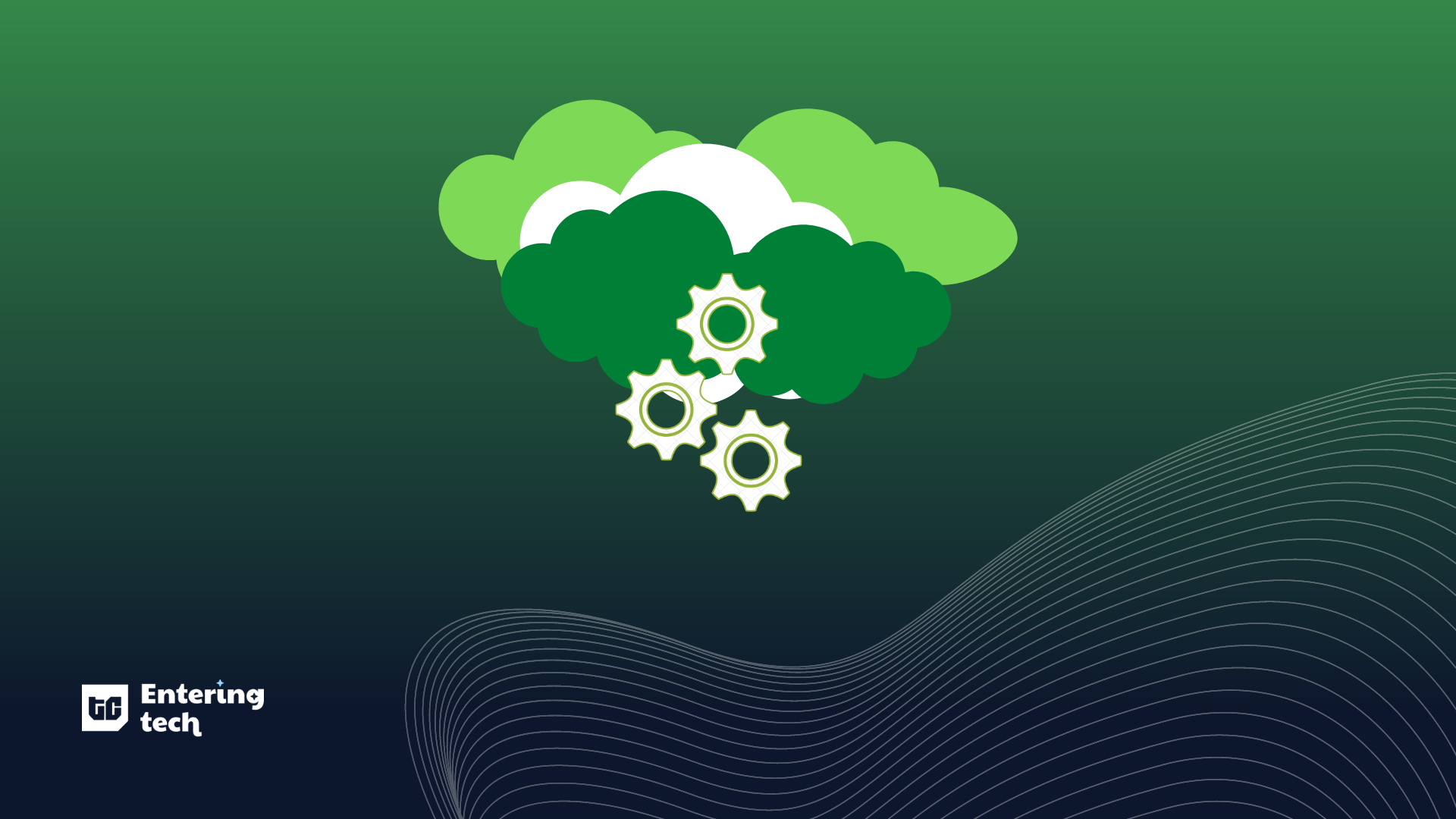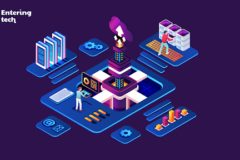
19 || October || 2022
View in BrowserBrought to you by

#Issue 008
How to become a cloud engineer
Greetings, ET readers 🖖🏾
A couple of months ago, I got the opportunity to meet and interview Adora in person. She’s one of the most ambitious and selfless people I know in our ecosystem and I’m glad we get to hear from her again.
During our conversation, Adora broke down various cloud engineering roles and explained cloud engineering to me like I was a candy-obsessed 5-year-old.
Most things live in the cloud these days, don’t they? My vacation photos are saved in iCloud (see what Apple did there? 😅). This means that if my phone gives up the ghost, I will not lose my beach-y memories after I get a new phone. That is so fetch, right? (#meangirls reference).
The cloud might seem abstract to people standing outside the technology club, but it’s the real deal and it’s here to stay. Interested in a career in cloud engineering? This edition will provide some information about what it takes to become a cloud engineer 👩🏽💻 ☁️
Happy reading!
by Koromone Koroye and Timi Odueso.

Tech trivia questions
Here is this week’s trivia. Answers are at the bottom of this newsletter.
- Who coined the term “cloud computing”?
- What is the most popular cloud service provider?

Who is cloud engineer ☁️?
Before we get into who cloud engineers are and if they can make it rain, let’s explain what the cloud is.

The cloud ☁️ is a network of computers that can be accessed over the internet. Think of them as storage systems where your files, websites, apps, movies, and games are hosted. With the internet, you can access the cloud and store or use the data there. Google Drive, Netflix, and YouTube Music are all great examples of cloud technology.
💡 Think of it as everything your computer can do right now, but on the internet instead. For example, Twitter and TikTok are hosted on the cloud; without internet access, you can’t watch the videos stored on TikTok’s cloud.
So who are cloud engineers?
As Adora Nwodo puts it, cloud engineers design, build, shape, maintain, and test cloud services for applications that run on the cloud.

How cloud engineers work
The first thing you should know about cloud engineering is that it’s an umbrella term; there are many roles under it.
Before we break down the main cloud engineering roles though, note that cloud engineers basically build the apps and services that run on the cloud.
💡 Engineers build and repair bad roads; electrical engineers maintain power output; even cleaners help maintain the appearance of physical structures.
Just like civil engineers build and repair bad roads, cloud engineers build all the apps and services you use on the cloud, and make sure you can always access them. Whenever there’s a new feature on TikTok, cloud engineers are to be thanked. Or whenever Twitter or WhatsApp is down and you can’t access the raunchy messages you’re sending to your crush, cloud engineers are running around trying to fix the problem.
There are many roles within cloud engineering, and the great thing about this field is that not all roles require coding knowledge. It can be a bonus, but it is not a hard and fast requirement. If you want to get into this field, here are five roles you should check out.

The roles in cloud engineering
The great thing about cloud engineering roles is that not all of them require proficiency in coding; it’s a plus, but it’s not a requirement.
Here are the five main roles:
☁️ Cloud software engineer: Cloud software engineers do the same things as software engineers.
Software engineers develop and build software platforms, including apps and websites, using code. Cloud software engineers do exactly the same thing but instead build the apps on and for the cloud, rather than on storage systems on laptops.
🏗️ Cloud architect/Infrastructure engineer: Cloud architects or infrastructure engineers are technically designers, but not in the visual sense that graphics or product designers are. They design cloud-based servers and systems to meet customer requirements.
The infrastructure here is the cloud, and so cloud architects/infrastructure engineers build and maintain the cloud.
In addition, they design cloud-based solutions for businesses.
👨🏾💻 DevOps Engineer: Contrary to their very cool role name, DevOps engineers aren’t actually from outer space. DevOps is an combination of the words “development” and “operations”, which is what these engineers oversee.
Unlike all the other roles listed here, DevOps engineers do more than just write code. They oversee the creation, development, and updates of software created or used by any company. Simply put, DevOps engineers are the product managers of the engineering team.
🌏 Site-reliability engineer (SRE): A site reliability engineer’s job is to ensure that websites and online platforms run smoothly and efficiently This role is similar to DevOps as it also treats development and operations as software problems.
In the same way a Chief Operations Officer ensures a company runs smoothly, an SRE makes sure that websites are always up and running. They do this by writing code that automates processes for recurring problems.
🔐 Cloud security engineer: Everyone needs a bit of protection, even the cloud. And here’s where cloud security engineers come in.
This is a cybersecurity role, and cloud security engineers help make sure that the cloud—and servers making up the cloud—are secure and safe from internal and external threats.
This includes building firewalls, maintaining threat-detection software and encrypting data.

Hear it from a “cloud engineer”
This week, we’ve brought you a full-stack developer who’s now working in cloud engineering at Microsoft.
Adora Nwodo is a software engineer currently building mixed reality cloud services at Microsoft. She has a YouTube channel called AdoraHack, where she talks about software engineering, productivity, and career growth.
Adora is also a published author. She recently wrote Cloud Engineering for Beginners, which teaches people about the cloud and its different career paths.
Q. How did you get into cloud engineering?
Well, I have a computer engineering degree from Unilag and that really helped. I worked as a full-stack engineer for about six years before I even got into the cloud engineering space.
I even got into Microsoft as a software engineer, and there, we have an open space for work. In that space, you hear people talking about a lot of things and that’s where I picked up talks of cloud infrastructure and development and it piqued my interest.
Thankfully, Microsoft is a company where people can shift roles easily, so I asked for cloud engineering tasks and I got them.
Q. What was the transition like?
It basically took two weeks—a sprint—but you have to remember that I was already an experienced software engineer.
I was basically doing the same thing, only this time, I was building and deploying on the cloud.
The transition is still happening, I’m still learning but the switch for me was almost immediate.
Q. What are the day-to-day tools every cloud engineer must have?
A good laptop and the internet are what you need.
In cloud engineering, we do most of our work on the cloud so we don’t need a lot of physical tools.
For me, the Command Line, or the terminal also plays a huge role. And for other software tools, depending on the cloud engineering role, you’ll need a text editor, command line and cloud providers, of course, and a prototyping tool that helps you draw diagrams and process flow like Microsoft Visio.
Q. What are the hardest and easiest parts of becoming a cloud engineer?
The hardest part for me is cloud availability. It’s one thing to build, and one thing to make sure that what you build always works. You can never have 100% uptime, even on normal services like the internet or electricity, there’s always downtime and that’s the hardest part for me about cloud availability.
The more enjoyable part is watching people use the services you built. Something was recently announced at Microsoft Ignite, and there was this joy that came with the fact that I knew that I contributed to that service shipping. Right. So I think those moments are the things that I enjoy the most.
Q. What are the biggest misconceptions about cloud engineering?
There are a few. First is that “cloud engineering” is one role. It’s not, it’s an umbrella term.
Then people always seem to think DevOps engineering is cloud engineering, but it’s not. DevOps is a part of cloud engineering, but cloud engineering is wider than DevOps.
You also don’t need to write code to work in cloud engineering. Roles in cloud security and DevOps don’t require you to code, but it’s always a plus.
And the most grating one is that people think they only need to learn about cloud providers in cloud engineering. If you want to succeed in cloud engineering roles, you need to learn the fundamentals of computers i.e. how computers work. The cloud, after all, is a network of computers, so if you don’t know how computers work, you’ll miss several things in cloud engineering.

You can learn cloud engineering too
Check out some of these resources that can bring you to the clouds.
- Price: Free
- Duration: 11 hours
- Tools Needed: Internet + laptop
- Level: Beginner
- Price: Free
- Duration: 13 hours
- Tools Needed: Internet + laptop
- Level: Beginner
- Price: Free
- Duration: 3 hours
- Tools Needed: Internet + laptop
- Level: Beginner
This includes a list of several cloud courses by Google
- Price: Free for the first 30 days. $29/month after
- Duration: Varies
- Tools Needed: Internet + laptop
- Level: Beginner
- Price: Free
- Duration: 24 hours
- Tools Needed: Internet + laptop
- Level: Beginner
- Price: $81
- Duration: 27 hours
- Tools Needed: Internet + laptop
- Level: Beginner to intermediate
- Price: $399 per month (25% off with code CAREER25)
- Duration: 4 months
- Tools Needed: Internet + laptop
- Level: Beginner

Ask a techie
Q. How can I marry my studies in school and my development in tech?
The good news is that several techies held a space just last night to discuss how students—undergraduate and postgraduate—can balance their tech careers and their studies. A recording is available here.
The first thing to note is that you should be transparent with your employers; let them know about your school schedule. This way, no one is blindsided.
Next, partition your time. The great thing about school—or most schools—are schedules, there are predetermined classes. You want to make calendars that outline your working hours and your class hours. Also, make sure that you have a few hours in between for rest; both work and school take a huge chunk of brain power. Communicate this schedule to your employers as well, and redefine deadlines. If it’s possible to work out an asynchronous schedule, do that. What should matter is that you get the job done within the given timeline.
The same goes for your tech courses. Divide your time well.
Rest and play hard. This might sound counter-productive but it’s not. Being in school and growing your tech career will take a lot of focus, and if you don’t rest enough, you will burn out and lose both battles. So take regular breaks and do things that relax you.
That’s all we can take this week. Have any questions about tech in Africa? Ask away and we’ll find answers for you.👇🏾

Tech trivia answers
- George Favaloro and Sean O’Sullivan, two technology executives at Compaq, did in 1996 while helping to create a billion-dollar business that would later sell cloud spaces to businesses.
- It’s Amazon Web Service (AWS) with 32% of the market. Microsoft Azure follows with 21% while Google Cloud is third at 10%.

Opportunities
- Adora Nwodo is giving away 10 copies of her book Cloud Computing for Beginners to readers of Entering Tech. If you’d like to win a copy, fill out this survey and we’ll randomly select 10 winners.
- Applications for the codeHiveClass of 2023 are now open. Young women from Tanzania, Kenya, Ethiopia, Rwanda and Uganda can apply for the chance to be part of a one-year programme to learn on-demand technology skills. Apply by October 21.
- The Obama Foundation Global Leaders Programme 2023 is open to applications from oung Africans creating positive change in their nations or communities. Selected leaders will be part of a six-month virtual internship programme and join the Obama Foundation network. Apply by October 21.
- Apply to the UN IOM iDiaspora Photo Contest 2022. Amateur and professional photographs can submit photos portraying three central themes and win up to $1,500 in prizes. Apply by November 4.
- The Fondation Maison des sciences de l’homme and the Institut Français de Recherche en Afrique of Nairobi are offering a three-month-long fellowship in France for postdoc researchers from Kenya, Tanzania, Uganda, Burundi, Rwanda, and Eastern Congo (Kivu) who have presented their thesis from 2017. Laureates will receive a monthly stipend of €1,600 at the start of each month. Apply by December 9.

Jobs
- Big Cabal Media – Community Manager, Zikoko Memes – Lagos, Nigeria (Hybrid)
- Big Cabal Media – Content Creator, Zikoko Memes – Lagos, Nigeria (Hybrid)
- Big Cabal Media – Learning & Development Executive – Lagos, Nigeria (Hybrid)
- TechCabal – News Editor – Africa
- 0x – Product Designer, Social Lead, Frontend Engineer, Backend Engineer – Remote
There are more jobs on TechCabal’s job board.
Disclaimer: TechCabal is not affiliated with or associated with jobs and opportunities listed on all its job boards and newsletters. All applicants bear the responsibility of researching about the roles and companies they apply to.
No longer want to receive these emails? Unsubscribe here



























